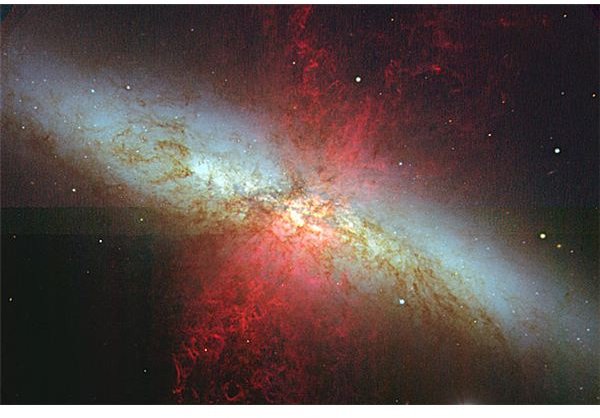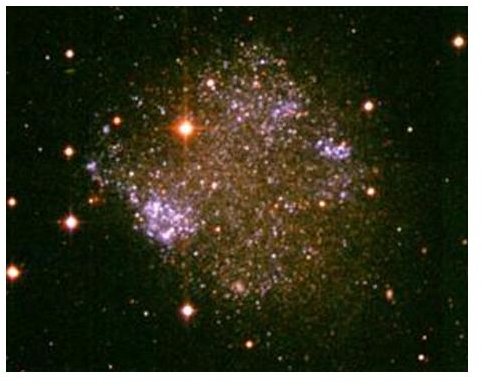What Are Irregular Galaxies?
Types of Irregular Galaxies
The only real definition of irregular galaxies is that they don’t have a regular form that might fit into one of the other Hubble galaxy classifications, such as elliptical, spiral or barred spiral. They are often very chaotic and random in appearance, as well as being asymmetric, and are basically just difficult to make sense of. Virtually all irregular galaxies experience high rates of star formationEvery irregular galaxy is unique.
There are two Hubble types of irregular galaxies. Irr-I is an irregular galaxy that has some semblance of a structure within it that are applicable to other types of galaxies, for instance a tiny amount of spiral or a slight bulge, but not enough to classify it as such. Irr-II, on the other hand, is completely lacking such structures. Some of these irregular galaxies are also active galaxies, meaning they are high luminosity, especially in regions of the spectrum other than optical, as well as often having radio jets in the active galactic nucleus at their center (or as close to a center as irregular galaxy may have.)
A third classification has been developed, known as dwarf irregulars or dl or dlrrs. These tend to have low metallicty and high amounts of gas. More on these later, as they may have been critical to the development of the Universe.
Irregular galaxies can vary in size from approximately 1,000 to 20,000 light years in diameter.
Example Irregular Galaxies


How Irregular Galaxies (Might) Form
While there’s no regular way in which irregular galaxies may form, with regards to the two Hubble types, there is a general paradigm. Irregular galaxies don’t start out being irregular, but rather form from more regular galaxies such as spirals or ellipticals that are then twisted and contorted into different shapes by the gravitational influence of collisions or near-collisions. Telescopes have been able to locate these collisions at all stages of development, with galaxies slowly being torn into chaotic forms before our eyes. These mechanics are not well understood, especially with regards to the existence of dark matter, so this is still very much a developing field in astronomy. Additionally, because every collision is different, each irregular galaxy must be considered on a case by case basis to consider how it formed.
Now, again, that only applies to those Hubble types. Dwarf irregular galaxies, on the other hand, may develop in a whole other fashion. These are theorized to be among some of the earliest galaxies to have formed, as well as one of the most common during that time period. While they consist of hot, massive young blue stars, because they are seen at such great distance they were originally termed faint blue galaxies (FBG). These galaxies may have later merged to form more organized galaxies, such as spiral or elliptical galaxies, though this is uncertain.
Not all dwarf irregular galaxies are so young, however. There are also dwarf irregular galaxies that exist nearer to us, that is, being considerably older but still strongly resemble the primeval low metallicity-high gas content of their younger cousins. Why dwarf irregular galaxies also exist here does not fit into the previous paradigm. Astronomers have also noted dwarf irregular galaxies forming from the distortion of small spiral galaxies, which adds even more questions to the pot. Only more scientific inquiry will tell!
